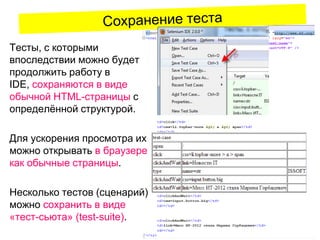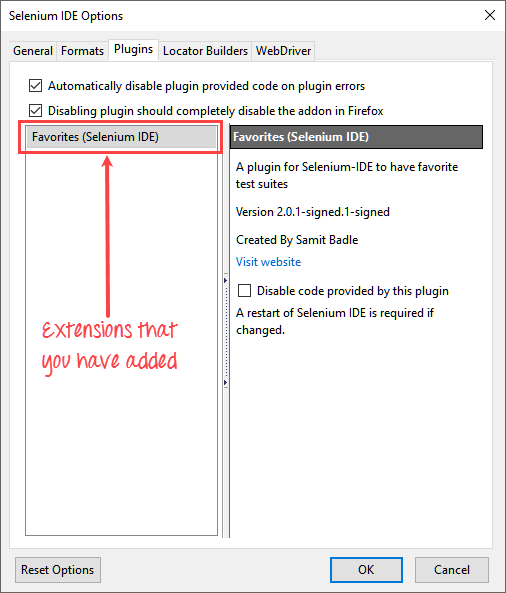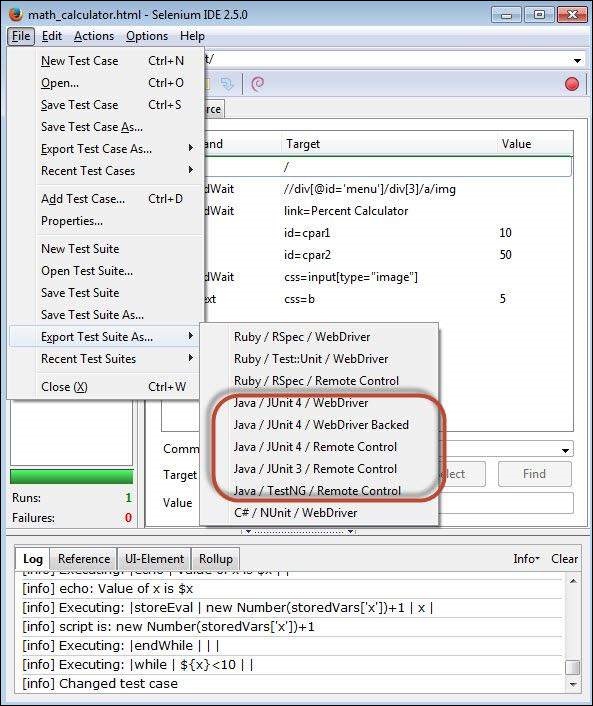

- #Selenium ide for firefox 28 how to
- #Selenium ide for firefox 28 code
- #Selenium ide for firefox 28 download
beforeAll (before all tests have been run).afterEach (after each test has been completed – before afterAll).afterAll (after all tests have completed).
#Selenium ide for firefox 28 code
They are also what enables plugins to export code to different parts of a test or a suite. Hooks make up a majority of the structure of the code to be exported (e.g., a suite, a test, and all of the things that go into it like setup, teardown, etc.). Or if the command changes the indentation level of the commands that come after it. This structure is useful if a command’s output is verbose and you want to be explicit. When declaring new commands you can either specify its output as a string, or as an object which specifies indentation levels).īuilt into code-export is a prettifier which controls the indentation of the outputted code. You can see an example of that in github: packages/code-export-java-junit. The most prominent of these are the commands and locator strategies (e.g., the syntax for the “by” lookups).įor a given language, there is a file for each, along with accompanying test files. The core function of code export is generating the language specific strings. Lastly, run yarn from the root of the project. Next, add the new package as a dependency to the package.json in code-export. Create a new packageįirst, copy an existing language package (e.g., packages/code-export-java-junit) and rename it (e.g., the folder and the details in the package.json file) to the target language and framework you’d like to contribute (e.g., packages/code-export-ruby-rspec, etc.). Here are the steps to create a package for a new language or for a new test framework within an already established language. Each snippet of code maps to a command in Selenium IDE and each of these packages rely on an underlying “core” package which does all of the heavy lifting. Contributing to Code Export for Selenium IDEĬode export was built in a modular way to help enable contributions.Įach language and test framework will have its own package containing the code to be exported. You should be able to take the exported Java file and place it into a standard Maven directory structure with a pom.xml file listing these dependencies and run it. The exported code for Java JUnit is built to work with Java 8, JUnit 4.12, and the latest version of Selenium 3.

#Selenium ide for firefox 28 how to
See How To Contribute for details on how. The Selenium IDE team intends to support all of the officially supported programming language bindings for Selenium (e.g., Java, JavaScript, C#, Python, and Ruby) in at least one testing framework for each language.Ĭontributions are welcome to help add new languages and test frameworks for a given language. Supported ExportsĬurrently, Selenium IDE export to Java. This will place inline code comments in the exported file with details about the test step in Selenium IDE that generated it. When exporting there is an optional toggle to enable origin tracing code comments.
#Selenium ide for firefox 28 download
This will save a file containing the exported code for your target language to your browser’s download directory. Test or a suite, selecting Export, choosing your target language, and clicking Export. You can export either a test or suite of tests to WebDriver code by right-clicking on a You can see examples as well as develop your own export capabilities.īut, first, here is what’s new. The code is being hosted and is available on Github. The development team is looking for community members like you to add to the capabilities of Selenium IDE. Code export from Selenium IDE today works with Java JUnit. One highly-requested has just been released – the ability to export code from Selenium IDE for use in Selenium WebDriver. Since its relaunch earlier this year, Selenium IDE developers have been busy responding to user enhancement requests. Disrupting the Economics of Testing Through AI Report.



 0 kommentar(er)
0 kommentar(er)
